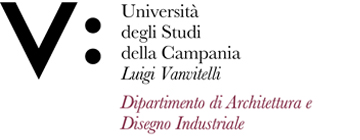Claudio GAMBARDELLA
Insegnamento di LABORATORIO DI INDUSTRIAL DESIGN 1
Corso di laurea in DESIGN E COMUNICAZIONE
SSD: ICAR/13
CFU: 14,00
ORE PER UNITÀ DIDATTICA: 112,00
Periodo di Erogazione: Secondo Quadrimestre
Italiano
| Lingua di insegnamento | ITALIANO |
| Contenuti | Il corso affronta le tematiche di base del design del prodotto industriale, con particolare attenzione agli scenari di sviluppo contemporanei e agli aspetti produttivi e materiali. |
| Testi di riferimento | Thompson R., (2007). Manufacturing processes for design professionals. London, UK: Thames & Hudson. |
| Obiettivi formativi | Il corso ha l'obiettivo di consentire agli studenti di sviluppare le conoscenze di base necessarie per progettare un prodotto industriale, dall'analisi dei bisogni del mercato e degli utenti, allo sviluppo del concept, alla progettazione e alla realizzazione di un modello digitale tridimensionale e/o fisico. |
| Prerequisiti | Conoscenza di base della storia del design e capacità di modellazione digitale tridimensionale con software come rhinoceros. |
| Metodologie didattiche | Il corso prevede lezioni frontali, seminari con aziende e designer, laboratorio di progettazione e attività di sperimentazione e ricerca svolte in aula sotto forma di workshop ed esercitazioni, |
| Metodi di valutazione | La valutazione del raggiungimento degli obiettivi formativi predefiniti sarà effettuata durante gli audit misurando, sotto forma di giudizio numerico, il grado di acquisizione degli strumenti e delle conoscenze fornite. |
| Altre informazioni | Le attività del corso si intersecano con le attività di ricerca della Biblioteca dei Materiali del Dipartimento. |
| Programma del corso | The course addresses the following topics: aware of the Italian Design; basic design; design and analysis of the production scenario; analysis of user needs and human |
English
| Teaching language | Italian |
| Contents | The course deals with the basic issues of industrial product design, with particular attention to contemporary development scenarios and to |
| Textbook and course materials | Thompson R., (2007). Manufacturing processes for design professionals. London, UK: Thames & Hudson. |
| Course objectives | The course aims to enable students to develop the basic knowledge necessary to design an industrial product, from the analysis of market and user needs, to the development of the concept, to the design and |
| Prerequisites | Basic knowledge of design history and digital three-dimensional modeling skills with software such as rhinoceros. |
| Teaching methods | The course includes lectures, seminars with companies and designers, design laboratory and activities of xperimentation and research conducted in the classroom in the form of workshops and exercises, |
| Evaluation methods | The evaluation of the achievement of the pre-defined training objectives will be carried out during the audits by measuring, in the form of a |
| Other information | The activities of the course intersect with the research activities of the Department Materials Library. |
| Course Syllabus | The course addresses the following topics: aware of the Italian Design; basic design; design and analysis of the production scenario; analysis of user needs and human |








